When it comes to baking, accuracy in your measurements is critical to a recipe’s success, and the single most accurate way to measure your ingredients is by weight.
I’ve received a few questions lately on some of my more popular cake recipes that seem to imply some confusion about weight versus volume measurements, specifically when it comes to measuring dry ingredients like flour. I figured I’d do a bit more in-depth explanation in a post, to hopefully clear up any confusion.
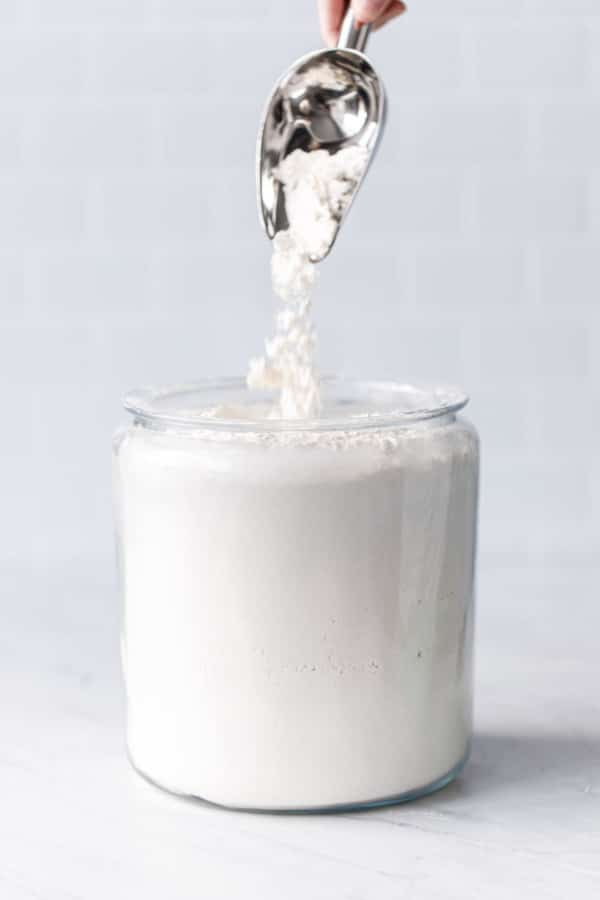
American bakers grew up using cups, where a cup of water is equal to a cup of flour and so forth. We also had it drilled into our brains that a cup is 8 ounces and a pint is a pound the world round (a pint being two cups or 16 fluid ounces).
But I’m here to say that a pint is NOT always a pound and a cup is NOT always 8 ounces—it depends on what you’re measuring.
Now before you start arguing, let me explain!
Weight versus Volume
Volume is a measure of the amount of space something takes up. Things like cups of flour, gallons of milk, cubic feet of helium… these are all volume measurements.
Weight is a measurement of an object’s heaviness. Grams of salt, pounds of sugar, kilograms of apples… these are measurements of weight.
Ok. So, that makes sense, right? Volume and weight are measuring two entirely different things.
You’ve heard the old riddle: Which weighs more: a pound of feathers or a pound of lead?
Trick question: they both weigh a pound! BUT the lead is going to have a much smaller volume since it is more dense than the feathers, so it will look like a smaller amount of material.
When we’re talking about baking, the differences might not be quite as apparent as feathers and lead, but the same is true of flour and water: one is much less dense than the other (in this case the flour is the feathers and the water is the lead). So a pound of flour is going to take up more space, or volume, than an equivalent pound of water.
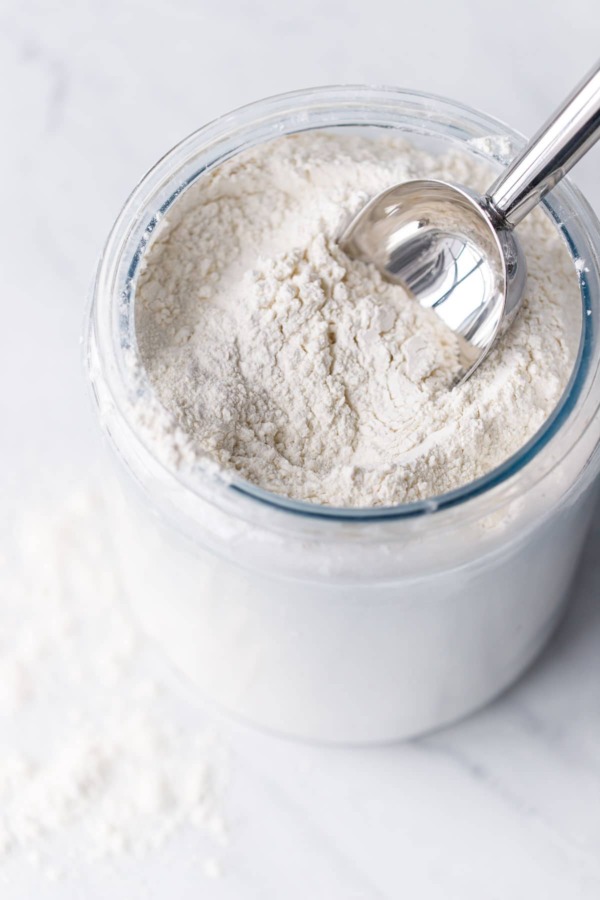
An Ounce of Confusion
Most of the confusion regarding weight and volume measurements occurs when talking about ounces: an imperial unit of measurement which can be used to indicate both weight AND volume. Fluid ounces refers to volume (like milliliters) whereas regular ounces refer to weight (like grams). The fact that they are both called ounces, and not always differentiated by saying ounce/fluid ounce is one reason why they are so problematic.
Ounces by weight and ounces by volume are ONLY comparable when you are measuring water or other liquids with a similar density.
For example, 8 ounces of water by weight will equal 8 fluid ounces by volume.
Flour, on the other hand, is a totally different ballgame and a confusing one to boot. Not that you’d ever measure flour with fluid ounces (which are only designed to measure—you guessed it—fluids), but, if you did, you’d find that 8 fluid ounces of flour only weighs about 4 1/4 ounces. Weigh out 8 ounces of flour by weight and you’re going to have about 14 fluid ounces by volume. See how confusing it is?
I mean, who do we need to petition to have fluid ounces changed to be called something totally different (flounces? frams? vols?) or, better yet, finally just switch to metric like the rest of the world?
Anyway.
Here are some visual comparisons to help illustrate this concept (keep in mind that you shouldn’t be measuring flour in a liquid measuring cup like this, I only did so here so I could illustrate the differences between ounces by weight and ounces by volume).
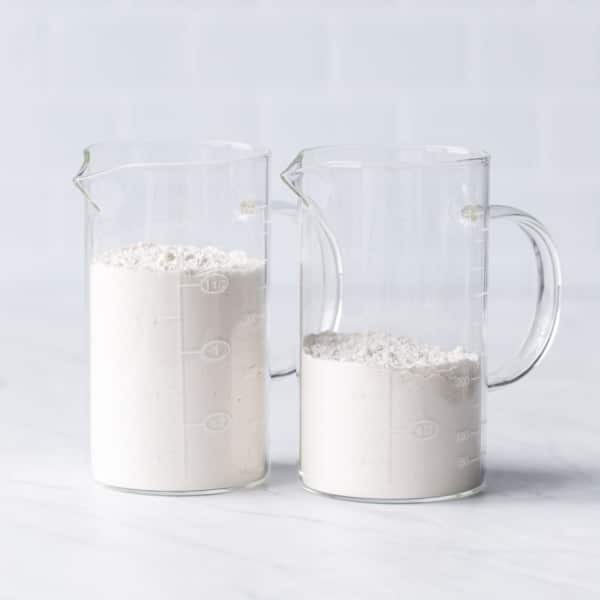
Both of these containers are holding 8 ounces.
On the left is 8 ounces of flour by weight, and on the right is 8 ounces of flour by volume (aka 1 cup).
If you weighed the two containers, the one on the right would only weigh approximately 4 1/4 ounces.
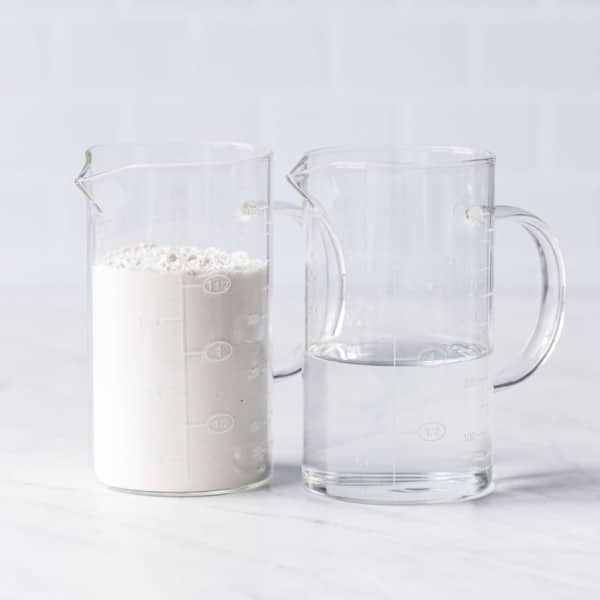
Both of these containers are holding 8 ounces.
Weigh out 8 ounces of flour and 8 ounces of water on a scale and this is what you get. Visually it looks like you have a lot more flour than water, but they weigh the exact same amount.
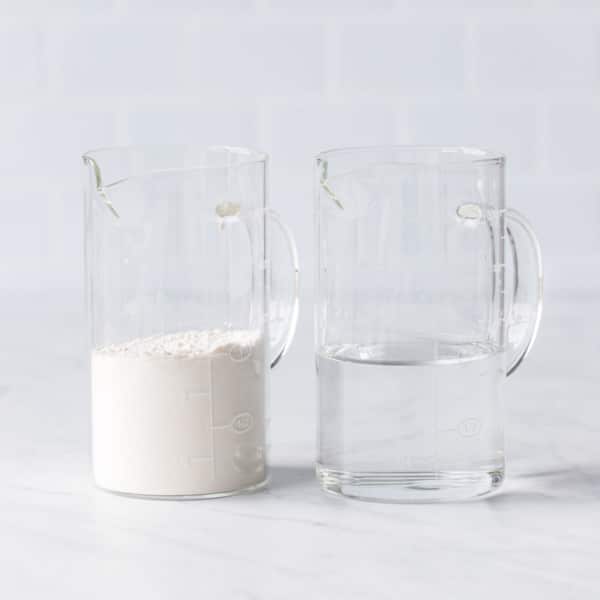
Both of these containers are holding 8 ounces.
On the left is 8 ounces of flour by volume and on the right is 8 ounces of water by volume. Basically, what you see here is 1 cup of flour and 1 cup of water.
But if you put these two containers on a scale, the flour on the left would only weigh 4 1/4 ounces, while the water would weigh 8 ounces.
So, are you less confused yet? More confused? I don’t blame you (lol).
My advice? When you’re baking, forget ounces entirely. Pretend they don’t even exist. It just confuses things. Instead, focus on cup/tablespoon measurements for volume, and grams for weight.
I’m trying to be better about writing my recipes using just cups and grams for this very reason, though you may still see ounces on older recipes or for things that are sold by the ounce, like bars of chocolate or cans of pumpkin.
Tip: When purchasing packaged or canned goods, if you’re unsure whether the ounce measurement on the package refers to ounces by weight or fluid ounces, look at the metric equivalent. If it’s grams (like on canned pumpkin or chocolate bars), you’re dealing with weight. If it’s liters (like on milk or wine) then you’re dealing with fluid ounces.
The Beauty of Metric
One of the beautiful things about the metric system is that there is no confusion. Grams are weight, milliliters are volume. If you see grams, grab your scale. If you see milliliters, grab your liquid measuring cup.
Another genius aspect of the metric system is that it is calibrated to water: so when you’re measuring water or other liquids with a similar density (like milk or orange juice), 200 milliliters will weigh 200 grams. Cool!
However, once you start measuring dry ingredients, which often have varying densities, the two numbers will not match.
1 cup of water weighs 236 grams.
1 cup of flour weighs 125 grams.
The volume is the same, but the weight is different (remember: lead and feathers).
One other benefit to using metric measurements is accuracy: scales often only show ounces to the quarter or eighth of an ounce, so 4 1/4 ounces or 10 1/8 ounces. Grams on the other hand, being a much smaller unit of measurement, make it easier to be incredibly precise. Exactly 236 grams of water is a much more accurate measurement than 8 3/8 ounces (technically 236 grams equals 8.32466 ounces but you’re not going to be able to measure that on a scale). The difference of 1/8th of an ounce is 3-4 grams, which may not seem like much, but it can add up.
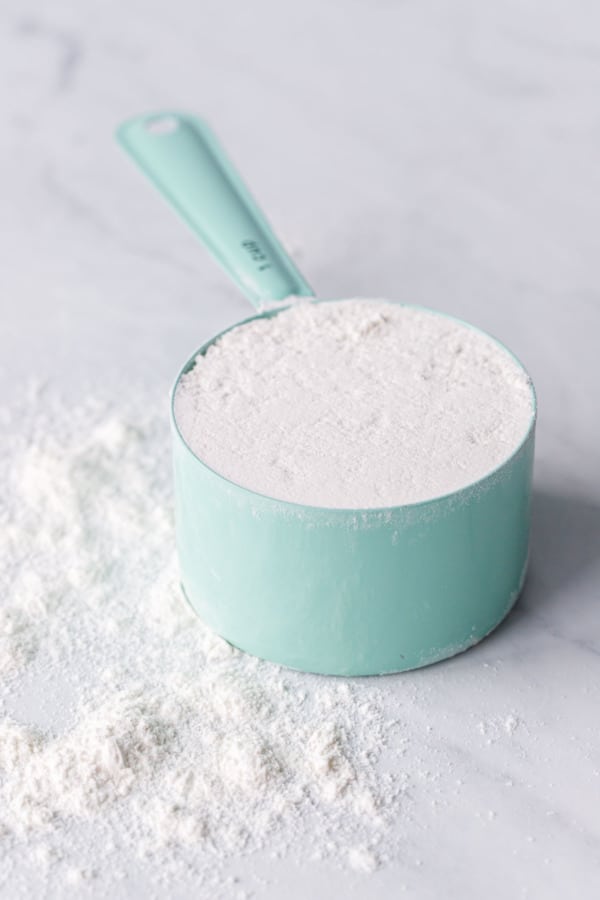
A cup is a cup is a cup
… depending on what you’re measuring and how you measure it.
Liquids are pretty reliable. A cup is pretty much always going to be a cup.
But for dry ingredients, flour specifically, the small granules of flour can be compacted, essentially packing more flour into the same amount of space (think about packing brown sugar, it’s a similar idea).
So depending on how you measure your flour, if you fluff it and spoon it into the cup, or if you scoop directly from a bag of flour that has settled, your ‘cup’ may vary by as much as 30% by weight, from 120 grams to upwards of 150 grams (!!) When you’re making a cake that calls for 3 cups of flour, that’s almost an entire extra cup if you’re scooping directly from the bag. No wonder the cake is too dry…
Here you can see what I mean. The cup on the left was measured using the fluff, spoon and sweep method, while the one on the right was scooped right out of the bag. 125 grams and 146 grams may not seem like a big difference, but it can mean the difference between a perfectly moist chocolate cake and a dry one.
The best way to measure flour is…
With a scale! In grams! (If you’ve read this far you probably guessed that.)
However, I know that’s not always going to happen. We’re so used to baking with cups that getting out the scale feels like a chore. And, while I’ve acclimated myself to using mainly weight-based measurements, I acknowledge that it is not for everyone.
If you’re going to continue to use cups, it’s helpful to know the best method for measuring a perfect cup of flour: one that’s actually a true cup and not a compacted one.
My favorite method: fluff, spoon and sweep.
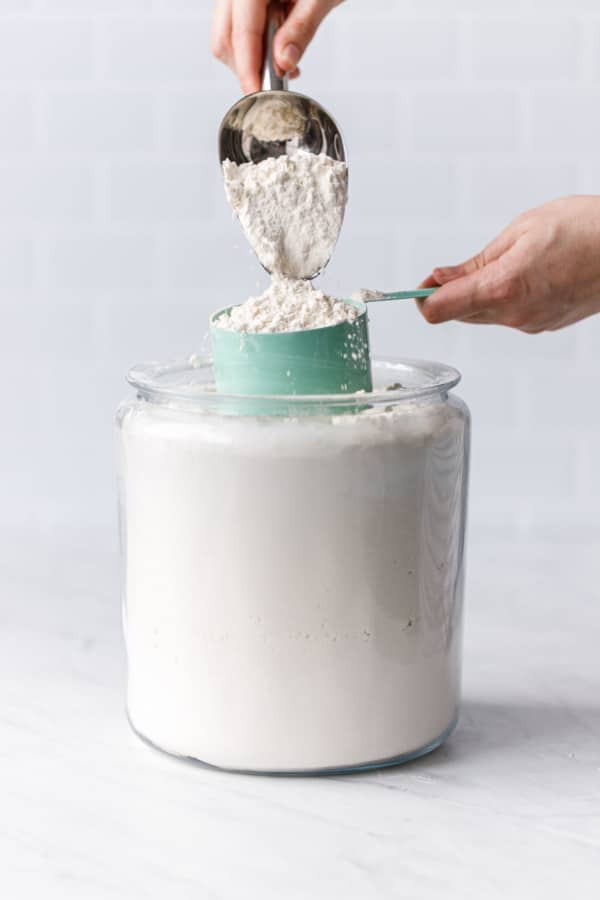
First, fluff up your flour by stirring it in the bag (or, better yet, pour it out of the bag into a large canister which will do a great job of aerating on its own).
Then, spoon flour and sprinkle it into your measuring cup. Don’t scoop flour directly into the measuring cup, which can compact it. Rather, get a big spoonful of flour and sprinkle it into the measuring cup.
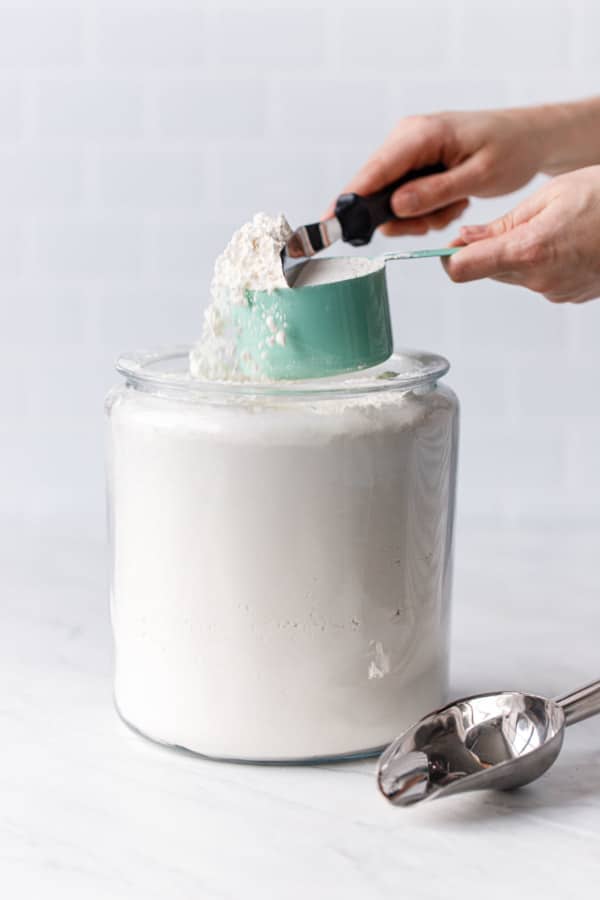
Once you’ve got a heaping pile of flour in the measuring cup, sweep off the excess using a straight-edge like the back of a butter knife or offset spatula to level off the top of the cup.
Try this out a few times with a scale handy, and see what weight you get for 1 cup of flour. You should see about 125 grams of flour per level cup. If you are getting 130 grams or higher, you might want to revisit your method (maybe you’re not fluffing it enough, or maybe you are compacting the flour when you level it, or maybe your measuring cups are off.)
Now just for comparison, go scoop a big cup of flour right out of a bag. Really dig your cup in there. Level off the top, then weigh the flour. Notice a difference? I bet you will! Those extra 30 or more grams of flour can really make a difference when baking, as extra flour can lead to dry or dense cakes and cookies.
Cocoa powder is another ingredient that can be compacted, so using either weight or the fluff, scoop and sweep method is useful here as well.
Liquid versus Dry Measuring Cups
Unless you only bake with weight-based measurements exclusively, you should have two kinds of measuring cups in your kitchen: liquid measuring cups and dry measuring cups, and you should use each accordingly. Don’t pour liquids into dry measuring cups, and likewise don’t try to measure flour in a liquid measuring cup. Simply put, you’re not going to get accurate results.
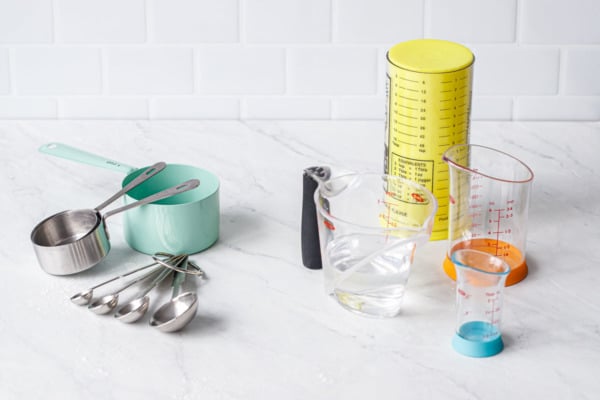
Liquid measuring cups are clear, with marks on the side of the cup indicating the volume of liquid in cups, ounces and milliliters. The ounce markers here refer to fluid ounces, and for water-like liquids the ounces by weight will equal the ounces by volume. However for liquids of different densities, say, sweetened condensed milk, for example, 1 cup or 8 fluid ounces will actually weigh 10 ounces on a scale.
Dry measuring cups and spoons should be labeled with only the dry volume quantity, such as 1/2 cup or 1 tablespoon. If you find yourself with a set of dry measuring cups that also lists grams or ounces on them, either teach yourself to ignore those numbers entirely (they’re only relevant for liquids, which you shouldn’t be measuring with dry cups anyway)… or buy a new set of measuring cups altogether.
Why can’t you measure dry ingredients in liquid measuring cups? Well, it’s hard to get them level. If you spoon some flour into a liquid measuring cup, the top is going to be uneven. So maybe you shake it a bit to try to level out the top, but you’re really just compacting the flour even more. With a dry measuring cup, you can perfectly level off the top using a knife or other straight edge, making sure you have exactly the amount you need.
Why can’t you measure wet ingredients in dry measuring cups? Well, you can, sort of, but you’ll probably make a mess of it. Because to get a proper measurement you have to fill the cup full to the brim with the liquid. Good luck trying to move it to your bowl without spilling…
Technically even liquids like vanilla extract should be measured in a liquid measurer, although for such small amounts like this it is not critical (it’s reasonably easy to measure out 1 teaspoon of vanilla in a spoon without spilling it). I like this beaker measuring set for that reason.
Liquids aren’t quite as problematic as dry ingredients, as you can’t ‘compact’ the molecules of, say, milk the way you can with flour. So a cup of milk is going to be pretty consistent in terms of volume and weight. Just remember that the ounces printed on your liquid measuring cups are fluid ounces, which aren’t always equal to ounces by weight.
Tip: Weigh your empty mixing bowl and write that number on the bottom of the bowl with a sharpie. Then you know the tare weight of the bowl even if you forget to tare your scale before adding ingredients.
But the gold standard of measurement regardless of what you’re measuring is to weigh out everything with a kitchen scale in grams. You simply cannot measure weight with volume-based measuring cups. Measuring by weight means you don’t have to deal with measuring cups at all (hooray for fewer dishes!)
Common Ingredient Weights
- All Purpose Flour: 1 cup = 125 grams
- Cocoa Powder: 1 cup = 120 grams
- Sugar: 1 cup = 200 grams
- Brown Sugar: 1 cup = 220 grams
- Butter: 1 cup = 226 grams
- Water: 1 cup = 236 mL/236 grams
- Milk/Cream: = 240 mL/240 grams
The more you bake by weight, you’ll start to memorize these common conversions until you no longer have to look them up!
I’d suggest picking up a copy of The Baker’s Appendix which has listings of dozens of common ingredients and their equivalent weights (I use these values as reference points when writing recipes). You can also use a resource like King Arthur Flour’s Master Weight Chart as well (print out a copy, laminate it and stash it behind your flour canisters).
Do note that different sources do list different base weights, for example King Arthur lists 1 cup of flour at 120 grams and The Baker’s Appendix says 125 grams.
When in doubt, follow the recipe!
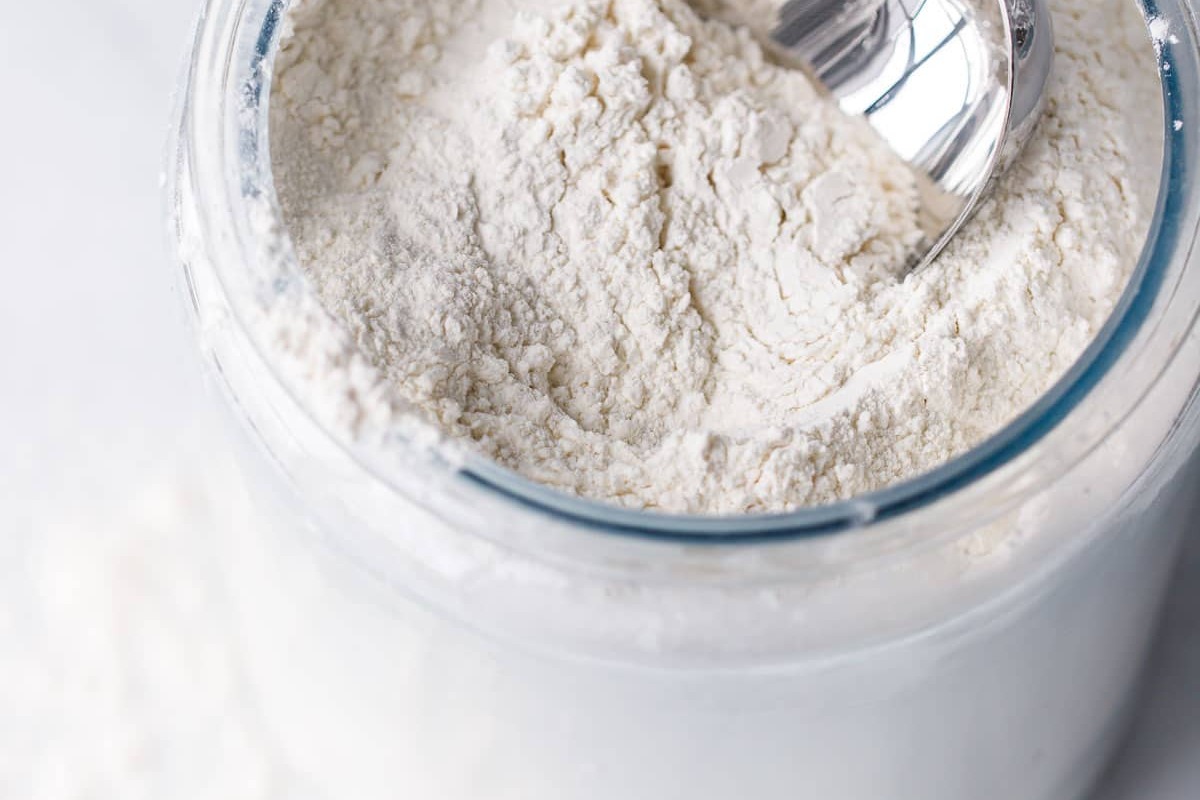
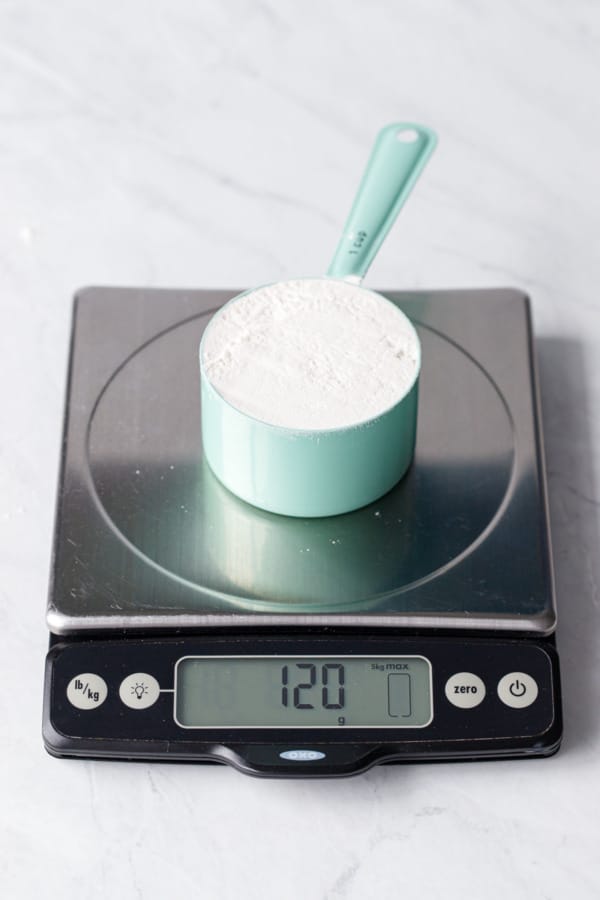
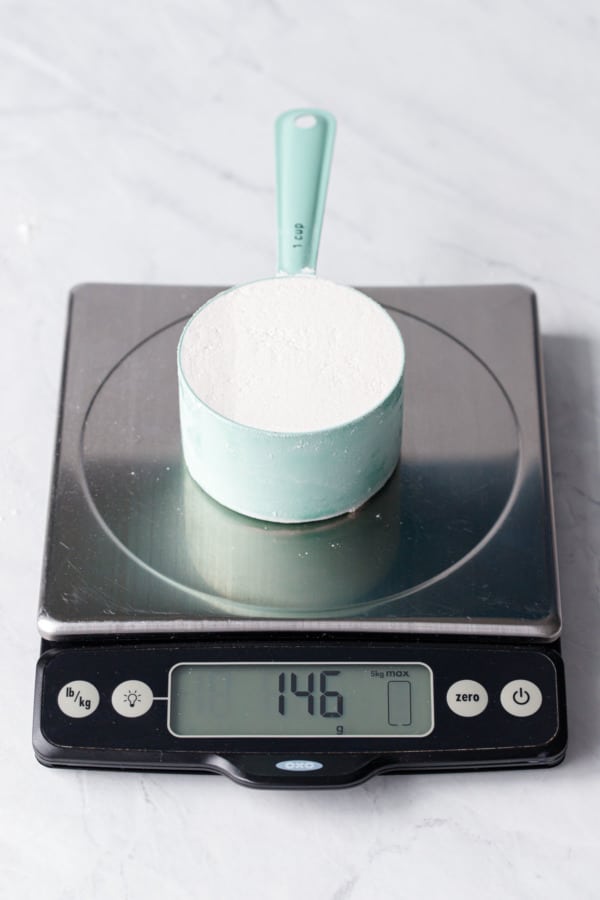
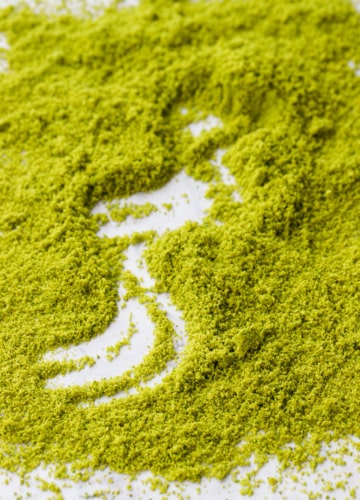
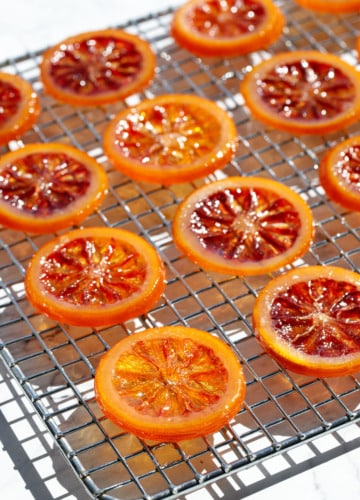
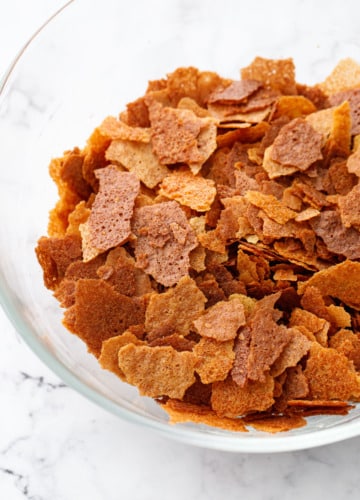
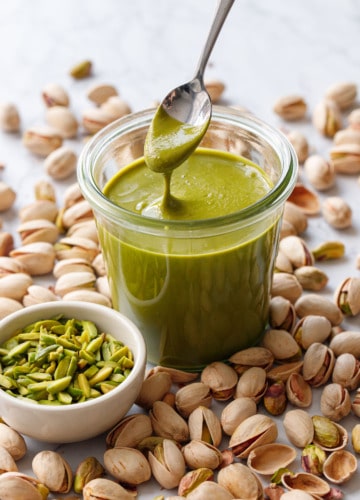
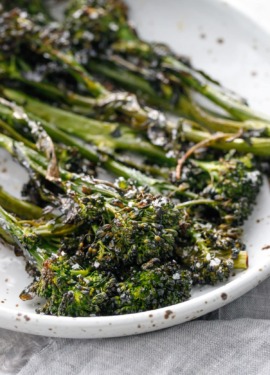
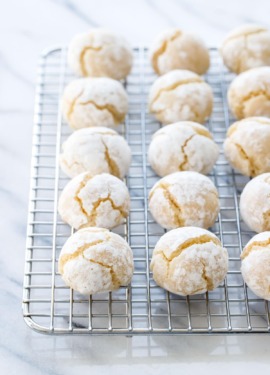
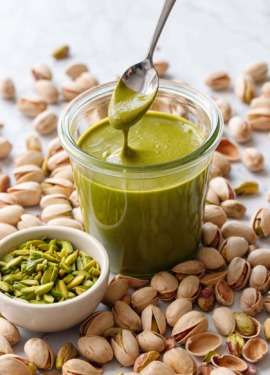
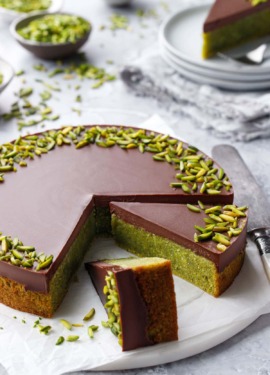
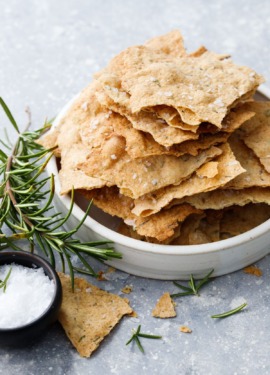
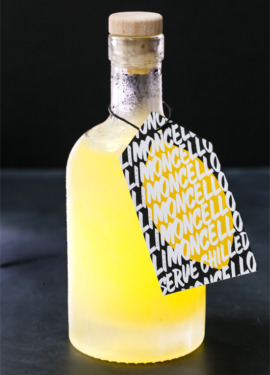
Grams are mass, not weight.
GRAMS ARE NOT WEIGHT. Grams are mass. Newtons are weight. Oh please, please, please correct this. Like you say, there is already too much confusion in the US system of measure. By the way lb-mass measures mass and lb-force measures weight … do you know what type of lb you are measuring? I never do, because everyone just says pounds!
Technically, yes, you are right. But such a distinction is really not necessary for the average home baker on Earth and would make an already confusing topic even more so, which is why I opted to use common language in reference to weight and grams to match the output of a home kitchen scale (I have never seen a home kitchen scale that reports Newtons). The point of the post is to clarify the difference between volume and mass/weight, where mass and weight are essentially interchangeable in this application as the acceleration of gravity is constant on this planet. If and when we start baking on Mars, then we can revisit this subject and you can help me rewrite this post, how does that sound? lol :)
What should you use as a default with recipes when they use oz.
I have one that uses oz and the container of that item is sold by oz net wt.
Just did a recipe that called for 8 oz cream cheese, but the package of cream cheese is 16 oz net wt. Do I use half the package 8 oz net wt, or measure a cup (8 oz)
I have had recipes that called for a 24 oz jar, the jar is 24 oz net wt.
I am new to doing cooking and this baffles me.
When it comes to package sizes, if you look at the metric amount on the package that’ll tell you if the oz is weight or volume. For example orange juice would have a mL amount, that means the oz are fluid ounces or volume (and you can use your cups to measure). On the other hand, cream cheese has grams on the package, which means it is ounces by weight (in that case, use your scale to weigh out 8oz or half the package – much easier than trying to squish the cream cheese in a cup anyway!)
Looking at the cream cheese, you are assuming that the 8 oz in the recipe is a weight amount and not a volume. No need to use a scale since the cream cheese has cut lines for the various amounts, would just cut in in half since it is sole as 16 oz net wt. Why look for grams if the oz is noted as net wt????
If the recipe calls for a 20 oz jar of something, and the jar has 20 oz net wt on it, should I assume that the recipe is specifying weight and not volume???
What should you use as a default with recipes when they use oz, weight or volume?? 8 oz by weight is not the same as an 8 oz cup, which would be volume.
I see no need to look at the metric if the oz is stated as net wt.
Not sure if Lindsay Landis will see this.
I understand your article and started using a scale a while back and it does make a difference. My question is about the smaller measurements. A couple of recipes says 8 g is the same as a tsp, when I measured out 8 g and filled a tsp the grams was a lot more, what about this?
For smaller measurements using the spoon measurers is fine. Most scales aren’t very accurate for very small measurements anyway. I actually have a jewelry scale I use when I need a very precise small weight (like for yeast in breadmaking), but the variances in most recipes for 1 or 2 teaspoons of things isn’t usually a big deal (unlike when working with cups of flour), so you’re totally fine using the spoons.
I use KAF and when following a recipe, I never know whether to use the volume or weight. Meaning, if the recipe says “3 c flour (375 g),” do I use 3 c KAF (360 g) or 375 g of KAF?
If a recipe calls for a gram weight, always use that first and foremost! It’s the best way to ensure you’re using the correct amount of flour. KAF has a slightly lower base flour weight for their recipes, 120g I think. I use 125g myself, other sources (like America’s Test Kitchen) use 140g which I find too high. But even with the varying base weights, if you use the g weight as specified in the recipe you are good to go!
The trick question is “What weighs more? A pound of feathers or a pound of gold?” Gold is measured in troy ounces and pounds. A troy ounce is heavier than a Avoirdupois (regular) ounce, but a troy pound has only 14 troy ounces and is lighter than a regular pound.
Most bags of all purpose flour say 30 grams is 1/4 cup, making a cup of flour weigh 120 grams. If a cup weighs 125 grams, then 1/4 cup would weigh 31 grams, which isn’t the same as what’s printed on the bag.
There’s no universal ‘standard’ for flour weights; I use 125g as my base, King Arthur uses 120, America’s Test Kitchen 140 (!). Another reason why grams is a much more accurate unit of measurement for flour, since it doesn’t matter who is weighing it, it’s always the same amount. Just follow the recipe and you should be good to go!
Would you measure 1 cup of buckwheat flour as 125 grams as well?
I do find that measuring by grams provides a much better outcome when baking. I prefer recipes that provide ingredients using grams. However, when they don’t, I get frustrated because different sources say 1 cup of flour is 120 grams, others say 125, etc. I did order your recommended book, “The Baker’s Appendix”. Hoping you can comment on the buckwheat flour prior to the book’s arrival. Thank you in advance.
Density of water is 1gram per ml.
One cup is 250ml
Therefore, 1cup of water is 250grams not 236grams.
In the US, a standard cup is 236mL/8 fluid ounces. Cup measurements may be slightly different in other countries.
If a cup of water weighed 250 g (a volume of 250 ml),then four cups of water would weigh 1000 g with a volume of 1000 ml (one liter). But there are four cups of water in a quart and a quart clearly does NOT equal a liter. A quart has a smaller volume than a liter. (Take it from a retired college chemistry professor!)
An American cup of water 236 ml (236 g) or 240 ml (240 g). But never 250 ml (250 g).
Spoken like a true American @Brian.
Thank you for your help
I live in USA
I would like to know how many grams in one cup has 250 ml
What are you measuring? If water, then 1 cup is 236g. If flour, 1 cup is 125g.
I came here while watching some guilty pleasure television, Kitchen Nightmares (US). Gordon had asked a chef to use 550 grams of flour to make some pasta and as someone that loves to cook but was educated in the US using the very confusing Imperial System, curiosity got the best of me so I headed to Google to check.
I got the answer from the first link I clicked but the title of your article caught my eye in my search results so I made sure to come back to your post after getting my answer and I’m SO glad that I did. I’ve just finished reading this post and I have to give you serious kudos for being able to write something full of useful information, that isn’t confusing in the slightest, and on top of everything, your writing has a certain flair to it that is not only entertaining but down to Earth. I’ve rarely used the word seriously, but this definitely qualifies as “Edu-tainment” to me and I know I’ll be sending this link to my friends/family who bake just in case they have the opportunity to learn something new to take their baking to the next level.
I’ll end my mini novel with a thank you, for the information and for giving me some possible insight into why I’ve had issues in the past when baking the same recipe, yet ending up with entirely different results. As someone that loves cooking and considers their food to be pretty good, I figured that maybe I just didn’t have the “knack” for baking and that was a bummer, so I’m excited to give it another try, the correct way :) I’ve always said that “Baking is edible chemistry, it’s an exact science” yet I never questioned the accuracy or calibration of my tools, a bit embarrassing in retrospect!
Thanks again!
Thank you so much for the kind words, and I’m so happy you found this post helpful! It really is so confusing with ounces and so forth.
Happy baking!
What should a cup of berries weigh? And should berries be measured in weight or volume?
Berries vary so much in size that cup measurements aren’t very reliable, so if you can use weight that’d be ideal. I often see berry measurements listed in recipes in package sizes, like pint or quart. For my jam recipes I’ll include a raw measurement (like 1 pound of berries), and a prepped measurement, like 4 cups of chopped/mashed fruit.
Thank you very much because I was very confused today trying to make a cranberry bread. Per google, a cup of flour is 4.25 ounces. However I was using Almond flour which is even less (found out after the fact) Hopefully my cranberry bread is still edible 😜🤣
I do not recommend substituting straight almond flour for AP flour in recipes, especially bread recipes where you need that gluten. Your best bet for GF baking is to use a GF flour blend which has a few different kinds of flours and other ingredients to more closely mimic AP flour, but you’re still going to have a hard time with bread. I’d recommend searching out some recipes that were developed to be GF to begin with, rather than trying to adapt one.
Great article. I have always wondered why the USA uses cups instead of weight measurements. I’ve found that weighing flour (any sort) differs with each cup I weigh. I’m an Anglo/American so I’m not biased, but I do find that the American cup system is totally inaccurate. As one of your readers said, English cook-book recipes now do a lot of translation between cups/grams/ounces.
Thank you for your clarification on this issue. Penelope
Thank you for this thorough, excellent explanation, and also for the King Arthur chart and other resources. Very helpful! Probably the best explanation I’ve seen online on this topic. It’s been hard to train myself to pull that scale out, but I know it’s the best way to get accurate measurements in recipes. Conversion charts are the next best thing. :-)
Thank you for the article and conversion chart. I much prefer using weight because it gives consistent results. The only thing I don’t normally weigh is butter. You have it on the conversion chart, but I find it easier to just use stick butter.
One full sized stick (4 in a 1 lb package) is 1/2 a cup. If you frequently make recipes that call for 1/4 cup, you can buy half sticks (8 to a lb) that are 1/4 cup each. Stick sizes likely vary outside the US, but they should still be consistent within a given country. No weighing or measuring needed, just unwrap.
I include butter weight as well as sticks in my recipes because I have lots of international readers, sticks aren’t always the same size from country to country.
Hello! I am just now dabbling into baking and am confused by all the US measurements vs other countries. So I have a recipe for a traditional English Christmas cake and they have both the grams and ounces listed-is that just in case your scale doesn’t convert to grams?
Also can I take an American recipe and convert it all to grams/millimeters and it still turn out the same?
If the recipe has grams I’d just go by that. Ounces, because they can apply to both weight and fluid volume, are all sorts of confusing.
I’m English and all my cook books give the choice of grams or ounces for weight and mls or fluid ounces (fl oz) for volume. One of them even has American cups as well. So impressed am I am with the American system that I’ve bought some cups (236.64 mls) and subdivisions thereof and when I bake bread, these are what I use, and it always works fine. Baking cakes requires more accuracy and for that I use ounces on scales that measure to 1/8 of an ounce.
I got a dried sourdough starter from a place on etsy with the instructions that’s all in cups and now I’m so confused because although I use our US liquid measuring cups to measure half cup filtered water, I use a dry measuring cup to measure out the flour and now I think you’re saying I’ve got it all wrong and it’s not equal. I’ve been doing this for FIVE days 😳 where do I go from here?
I would follow the instructions you received with your starter. I’ve always fed mine at 100% hydration (so equal water and flour by weight), but other recipes may have different needs.
Equal parts flour/water by weight would be 1/2 cup water (118 grams) and a scant 1 cup flour (also 118 grams). I’d highly recommend getting a scale if you’re serious about sourdough, it’s a game-changer!
I appreciate this post!! I do have a question that I’m hoping you can answer. I work with sourdough recipes and there are times that I change the type of flour I use, mostly because of the current times we find ourselves in and I can’t find the flour I commonly use. There’s a difference in weight for different types of flours. Do you follow the recipe with the weight needed no matter what flour you use, or do you have to take into consideration how much water is needed to hydrate, like say a whole wheat?
Interesting read that I plan on sharing. Even when using US cups you can get a different weight in grams. For example I have two sets of measuring cups, both metal, and when using the cup measurement I will get a different gram measurement from each one when placing the amount in the cup on a scale. For me grams and milliliters work the best, because even though I live in the US, I grew up in Australia so it is what I am used to.
a very good tip, thank you, and nice reminder of precision required in baking, where I’m often hit or miss
yes so many recipes are written in cups which i find very aggravating. cups can be all sorts of sizes, for a start. When i write up recipes i spend ages trying to convert all the measurements Grrrr…
Oh man Australian cups are a whole other matter because they are calibrated differently than American cups. I promise to include grams in all my recipes from now on (and will slowly try to get all my old recipes updated as well!)
This was really well written and explained. I cook a lot so not really an issue but for new cooks it can be so confusing. Love your emails and recipes. Thanks. Maggie. Aussie in Dubai.
So glad you found this useful (and understandable – I struggled with how to explain it in a way that wouldn’t leave people more confused than when they started! lol) ❤️